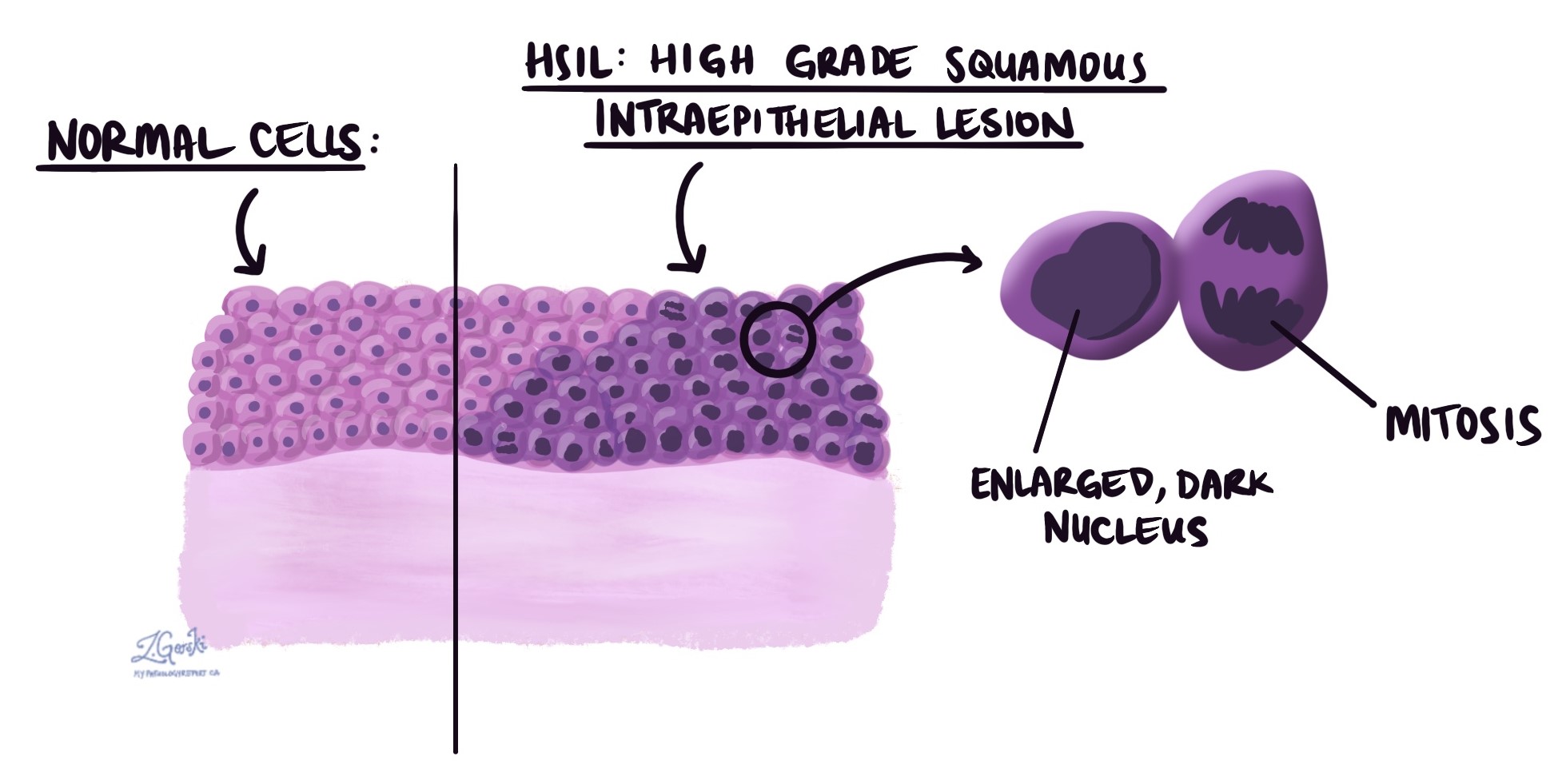High grade squamous intraepithelial lesion (HSIL) is a precancerous condition caused by infection with human papillomavirus (HPV). It involves abnormal changes in squamous cells, which are flat cells found on the surface of tissues such as the cervix, vagina, vulva, penis, and anal canal. HSIL is primarily caused by high-risk HPV types, especially types 16 and 18, which can significantly alter the structure and function of infected cells.
Is HSIL a type of cancer?
No, HSIL is not cancer, but it is considered a precancerous condition. This means that while HSIL itself is not cancerous, it has a high potential to progress to a type of cancer called squamous cell carcinoma if it is left untreated. Because of this increased risk, medical professionals typically recommend treatment to remove or manage the abnormal tissue.
What causes HSIL?
HSIL is caused by infection with certain types of human papillomavirus (HPV). HPV is a common virus transmitted primarily through sexual contact. While there are many different strains of HPV, types 16 and 18 are the most commonly associated with HSIL and have the highest risk of progression to cancer. Persistent HPV infection, especially by these high-risk types, can lead to the development of HSIL over time.
How long does it take for HSIL to turn into cancer?
The progression from HSIL to cancer typically occurs slowly, often over several years. However, the exact timeframe varies depending on factors like the individual’s immune system and the specific HPV type involved. Without treatment, HSIL has a significant risk of progressing to squamous cell carcinoma. Regular screening and follow-up appointments are essential to catch any changes early and reduce the risk of progression to cancer.
Does HSIL need to be treated?
Yes, HSIL usually requires treatment because of its high risk of progressing to cancer. Treatment methods depend on the location and extent of the abnormal tissue and may include procedures such as surgical removal, laser therapy, or cryotherapy (freezing). These treatments aim to eliminate or significantly reduce the risk of the condition progressing to squamous cell carcinoma. Regular monitoring and follow-up care are also critical after treatment to ensure that the HSIL does not return or progress.
What is the difference between HSIL and CIN?
HSIL (high grade squamous intraepithelial lesion) is a general term used to describe severe precancerous changes in squamous cells, while CIN (cervical intraepithelial neoplasia) specifically refers to these changes when they occur on the cervix. CIN is further classified into grades: CIN 1 (mild), CIN 2 (moderate), and CIN 3 (severe). HSIL typically corresponds to CIN 2 or CIN 3, indicating moderate to severe abnormalities with a higher risk of progressing to cervical cancer. Essentially, CIN is the specific classification used exclusively for the cervix, while HSIL can apply to several different body areas.




